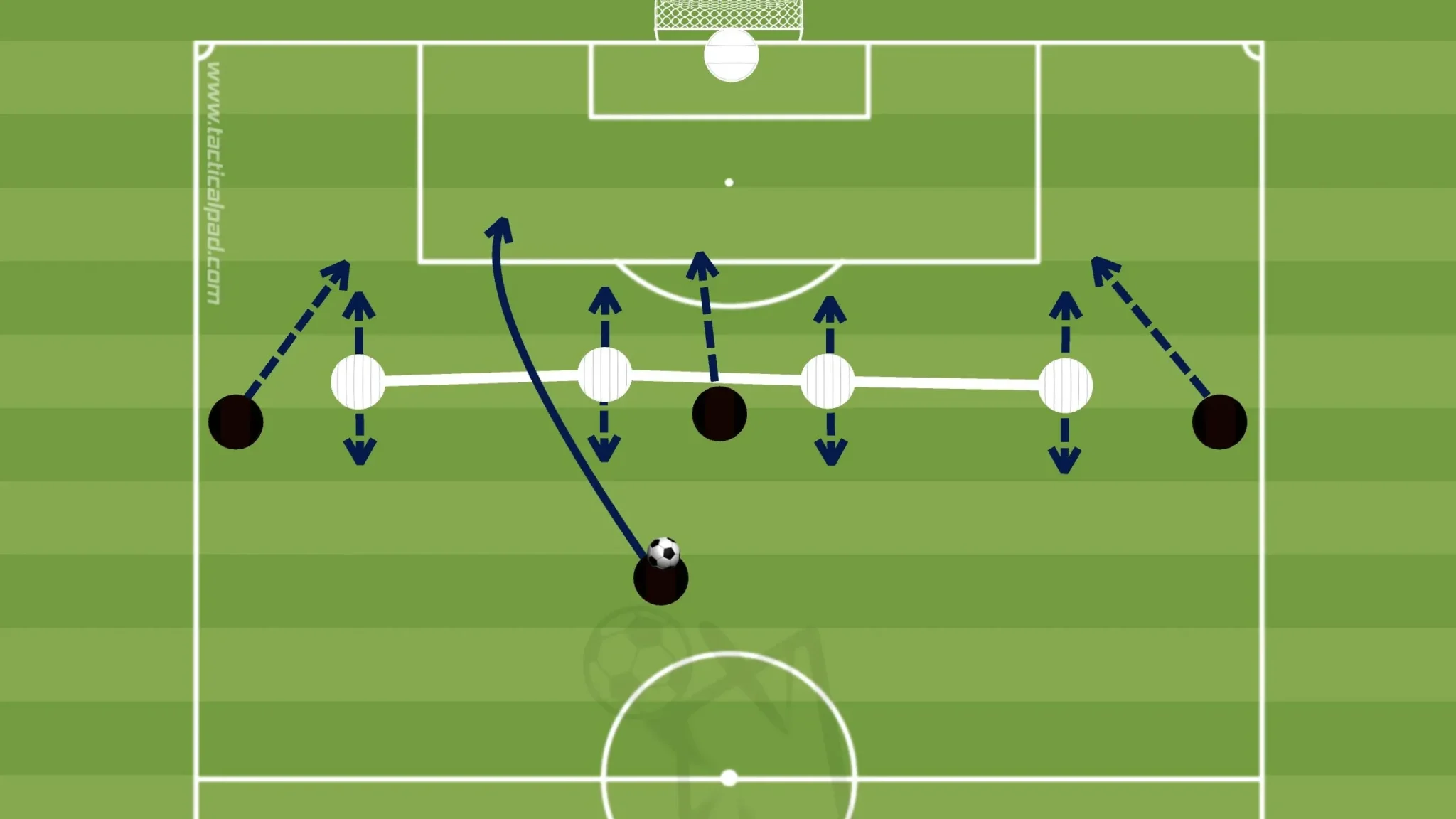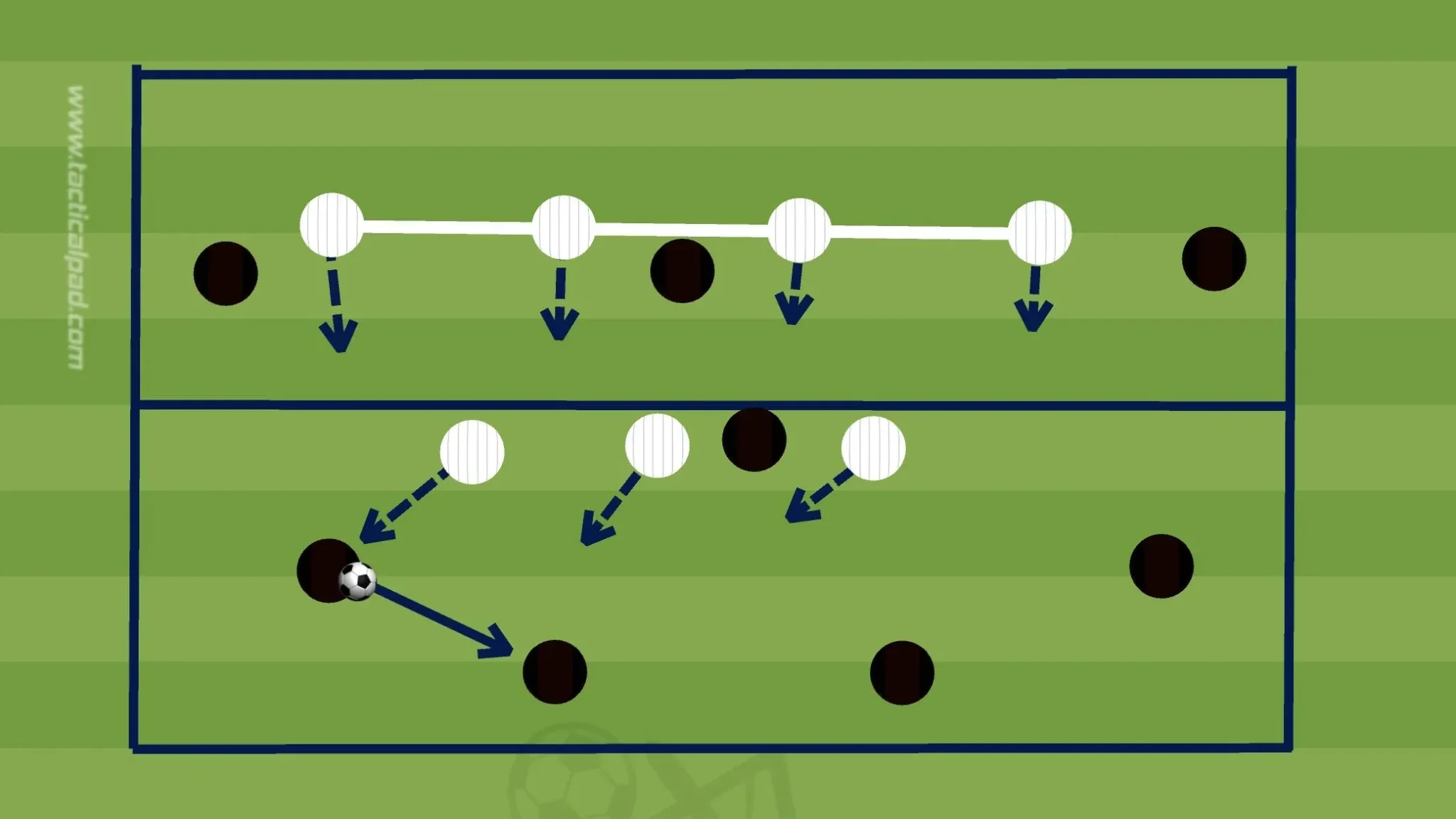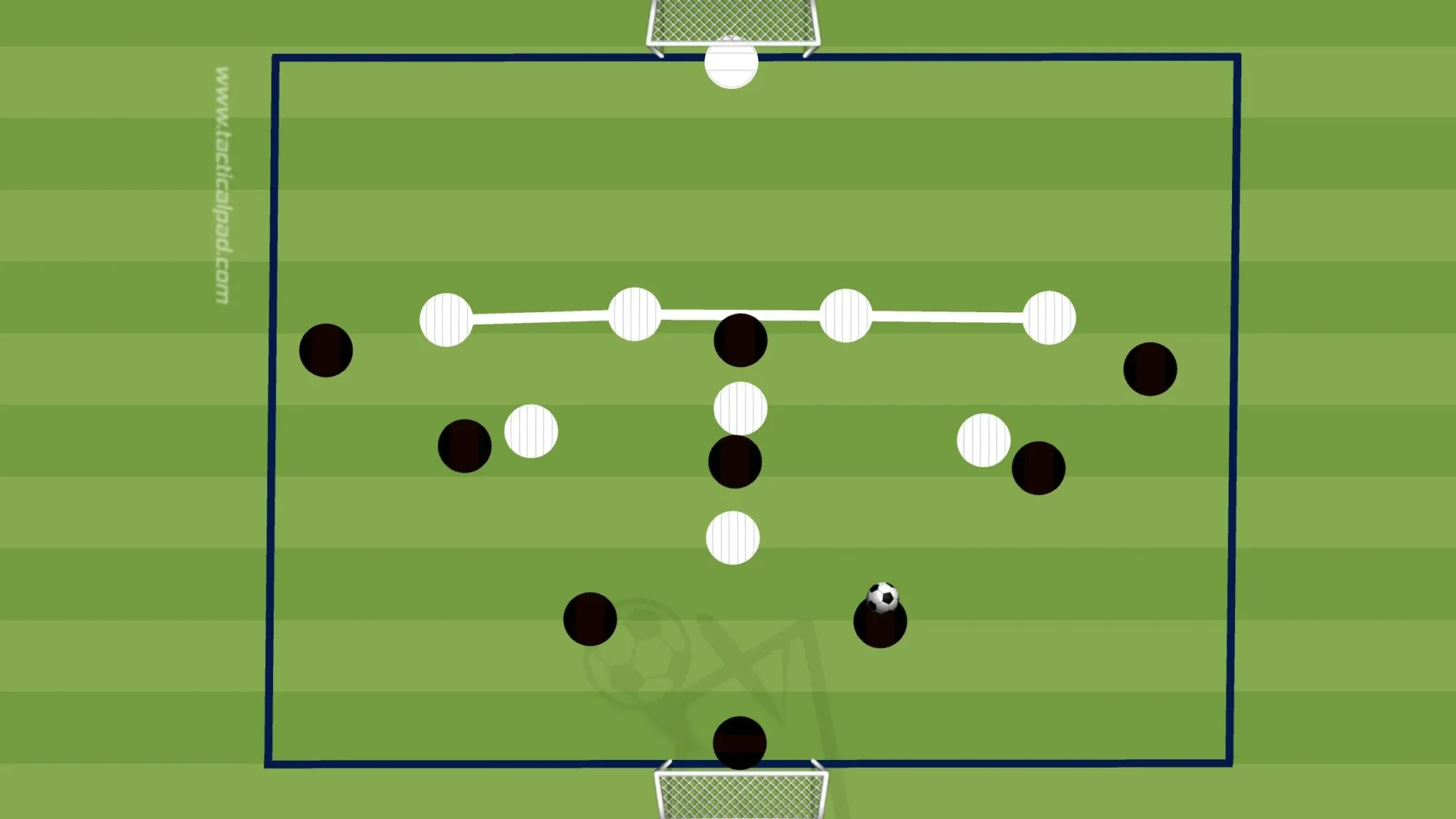The offside line is one of the most powerful collective tools available to a defensive unit. Used effectively, it compresses space, limits the opposition’s ability to penetrate, and creates opportunities to regain possession. Poorly coordinated, however, it becomes a liability—inviting through balls, isolating defenders, and exposing the goalkeeper.
For coaches and analysts, training the defensive line to use the offside trap and offside line effectively is less about rehearsing a single movement and more about instilling collective timing, communication, and spatial awareness. This article explores the tactical principles behind the offside line, methods to train it, and practical drills that can help defensive units refine their coordination.
The Tactical Function of the Offside Line
At its core, the offside line is about spatial control. By advancing in unison, defenders deny attackers depth and force them to play in front of the block. The line becomes a moving reference point, dictating where play is allowed to happen.
Key tactical objectives include:
- Reducing vertical space: By holding or pushing up, defenders minimize gaps between lines, compressing the midfield.
- Controlling runs in behind: A well-timed push forces attackers to mistime their runs or risk being caught offside.
- Triggering turnovers: Many successful traps occur not just through positioning, but by reading the opposition’s pass timing and stepping together.
- Psychological pressure: Attackers hesitate to run in behind if they sense the defense is disciplined and coordinated, reducing their options.
Principles for Effective Offside Line Management
1. Collective Synchronization
The defensive line is only as strong as its weakest link. If one defender drops even a meter too deep, the trap fails. Synchronization requires constant communication—both verbal (e.g., “step”) and non-verbal (gestures, eye contact).
2. Clear Leadership
Typically, the center-back or the defender facing play leads the line. Their role is to read the cues (ball carrier’s body shape, pressure on the passer, positioning of forwards) and give the signal to step.
3. Timing and Triggers
Good defensive lines don’t move arbitrarily; they move based on cues. Common triggers to step up include:
- Poor ball control by the passer (forcing a delayed through ball).
- Backward pass (allowing the line to advance).
- Heavy touch or pressure on the ball-carrier.
4. Defensive Depth and Risk Management
The offside line should never be divorced from game context. A high line without pressure on the ball is dangerous. Similarly, in low-block situations, the line may sit deeper but still function as a reference point to prevent strikers from finding space.
Training the Offside Line: Practical Approaches
Phase 1: Technical-Tactical Understanding
Before applying in game-like scenarios, defenders must understand spacing. Exercises can begin with small numbers—two or three defenders against one runner—focusing on stepping together in response to passing cues.
Phase 2: Unit Work
Expand to a back four or back five. Key focus: line shape, communication, and identifying the leader. Introduce live attackers who attempt to time runs behind.
Phase 3: Team Integration
The offside line becomes most effective when integrated with midfield pressing. If the press is late or poorly executed, the line is exposed. Drills should therefore combine pressing triggers with line management.
Example Training Drills
Drill 1: Back Four Coordination Game
- Setup: Half pitch, back four vs. three attackers, neutral playmaker outside.
- Objective: Defenders work on holding and stepping the line as the playmaker attempts to release forwards.

Coaching Points: Center-back leads, defenders step on cue, goalkeeper provides depth behind.
Drill 2: Press and Step
- Setup: Two zones—midfield and defense. Midfielders apply pressure to force a back pass or delayed action. Defensive line reacts by pushing up to trap forwards.
- Objective: Link midfield pressing to defensive line adjustment.

Drill 3: 8v8 with High Line Constraint
- Setup: On a shortened pitch, defenders must maintain a high line. Attackers are encouraged to run in behind, with rules rewarding timing.
- Objective: Train defenders to step in sync under match pressure while reading ball cues.

Visual Tools for Coaching
To reinforce learning, coaches can use:
- Video analysis: Clip sequences where the line succeeds or fails, highlighting spacing and triggers.
- Freeze-frame walkthroughs: Stop play during training to adjust line positioning.
- GPS or tracking data: Show distances between defenders to emphasize compactness.
Common Errors and Corrective Coaching
- One player dropping deep: Correct by emphasizing communication and body orientation.
- Stepping without pressure on the ball: Reinforce link between pressing and line movement.
- Ball-watching instead of scanning runners: Train defenders to check both ball and striker positioning.
- Overuse of the trap: Offside should be a tool, not the only defensive solution—balance risk and reward.
Conclusion
Using the offside line effectively requires more than just a coordinated step forward. It is a collective defensive principle built on synchronization, leadership, and timing. When executed with discipline, it compresses space, frustrates attackers, and provides opportunities to regain control.
For coaches and analysts, the challenge lies in bridging theory and practice—linking pressing schemes with defensive line management, training defenders to read triggers, and embedding communication habits. Done well, the offside line transforms from a risky gamble into a powerful defensive weapon.
